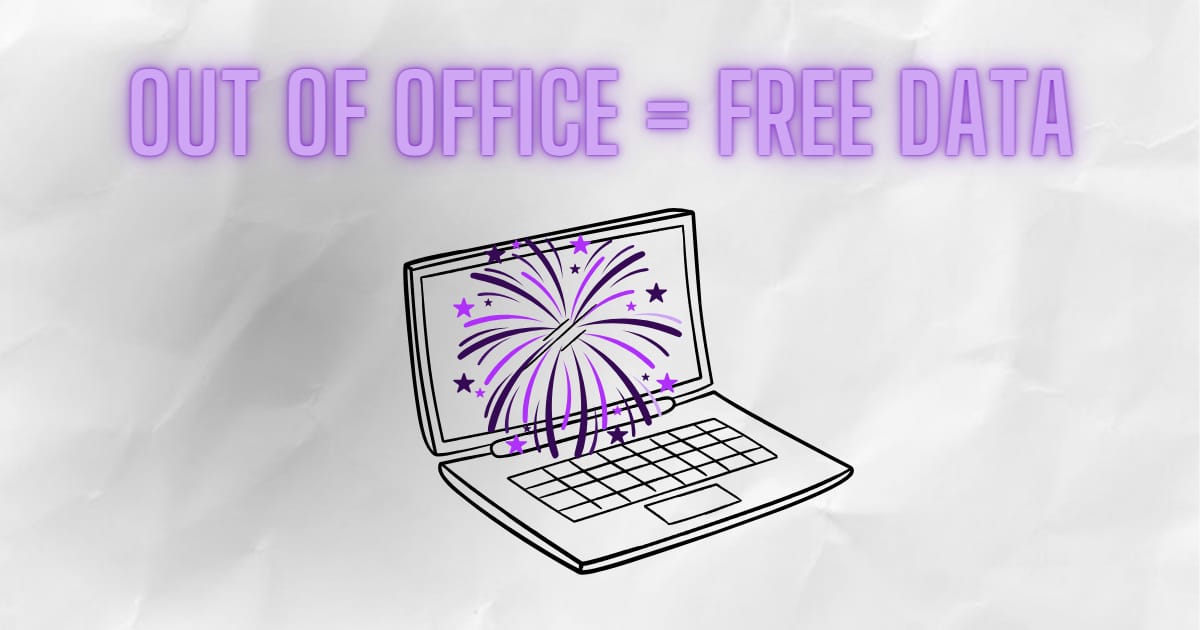Welcome back to Marketing Qualified! Here’s what we’re talking about this week:
-
Out of office = free data. Use this data collection hack around holidays.
-
What AI search actually values. Research on what types of sites get mentions.
🎆 Out of office = free data
Next week, your inbox will flood with out of office auto-replies.
Most marketers will just delete them.
You shouldn’t.
Because buried inside those messages is a free data set your competitors are ignoring.

Here’s how to turn them into targeting fuel:
1. Send a normal marketing email
Just send a regular email to your list. Think newsletter, product update, whatever.
2. Wait for the OOO messages to roll in
A huge percentage of professionals take time off during the week of July 4th. Which means…
“I’m out of office — contact Jen, our head of ops.”
“I’m on vacation, but for urgent matters, try my manager, Alex.”
That’s free intel. Don’t waste it.
3. Capture the backup contacts
The names you capture most likely work in the same department as the contact you’re emailing.
Oftentimes, it’s even their boss, or someone higher up in the organization. AKA, someone with more decision making power.
Add them to your CRM. Build a map of your accounts that goes deeper than one contact per logo.
Just don’t cold email or DM these people. That’s lazy and burns trust.
Warm them up the right way.
Drop them into your ad audiences, follow them on social media, start commenting on their posts, etc.
Bonus: Automate the whole thing
Use a tool like Zapier to:
-
Trigger on incoming replies
-
Filter for subjects like “Out of office” or “PTO”
-
Parse names, roles, emails, and log them
While everyone else is grilling hot dogs, you’re quietly building a new list of high-context, high-intent, high-likelihood-to-have-budget contacts.
And the best news is, this tactic doesn’t just work around the 4th of July. Rinse and repeat around all holidays.
📰 In the news this week.
✍️ 70 AI prompts for marketers.
👍 How Gen X uses social media and why it matters to marketers.
🤖 Creators turn to agentic AI to manage fan engagement.
🏆 Breaking Guinness World Records as a PR strategy.
🧠 The 5 new realities of search: Rethinking content strategy for 2026
🔎 What AI search actually values.
Ahrefs just published some interesting data around AI Search Engines.
They analyzed the top 50 sites mentioned by Google AI Overviews, Perplexity, and ChatGPT.
The result? Some AI systems mimic search trends, others show platform-specific bias.
Here are the main takeaways of the research…
Wikipedia skews ChatGPT
Wikipedia was extremely dominant for ChatGPT mentions. They were mentioned 16.3% of the time. New sites were also strongly represented in this index.
However, mentions of corporate and entertainment sites were the most sparse. They’re not getting as much visibility compared to how they performed on Google.

Google AI Overviews love user generated content (UGC)
Sites that rank well and receive more organic search traffic in Google also appear to be mentioned more frequently in Google’s AI Overviews. Which is no big surprise.
YouTube, Reddit, Quora, and Wikipedia were over-represented compared to their traffic levels. While social media sites like Facebook, Instagram, and TikTok were under-indexed.

Perplexity best mirrors search
Perplexity aligned most with high-traffic domains. Top mentions included YouTube, Wikipedia, and Apple, indicating a strong preference for real-world popularity.

Main takeaway
If you’re looking to get mentions inside of AI search tools, UGC, forums, and reference content appear more valuable than traditional SEO alone.
Brands investing in trusted, educational content on these sites will likely capture the most eyeballs in the era of AI search.
😂 Marketing meme of the week.

How’d we do with this week’s newsletter?
A READER’S REVIEW

Enjoy this newsletter? Forward it to a friend to spread the love.
Want us to write about something specific? Submit a topic or idea.








